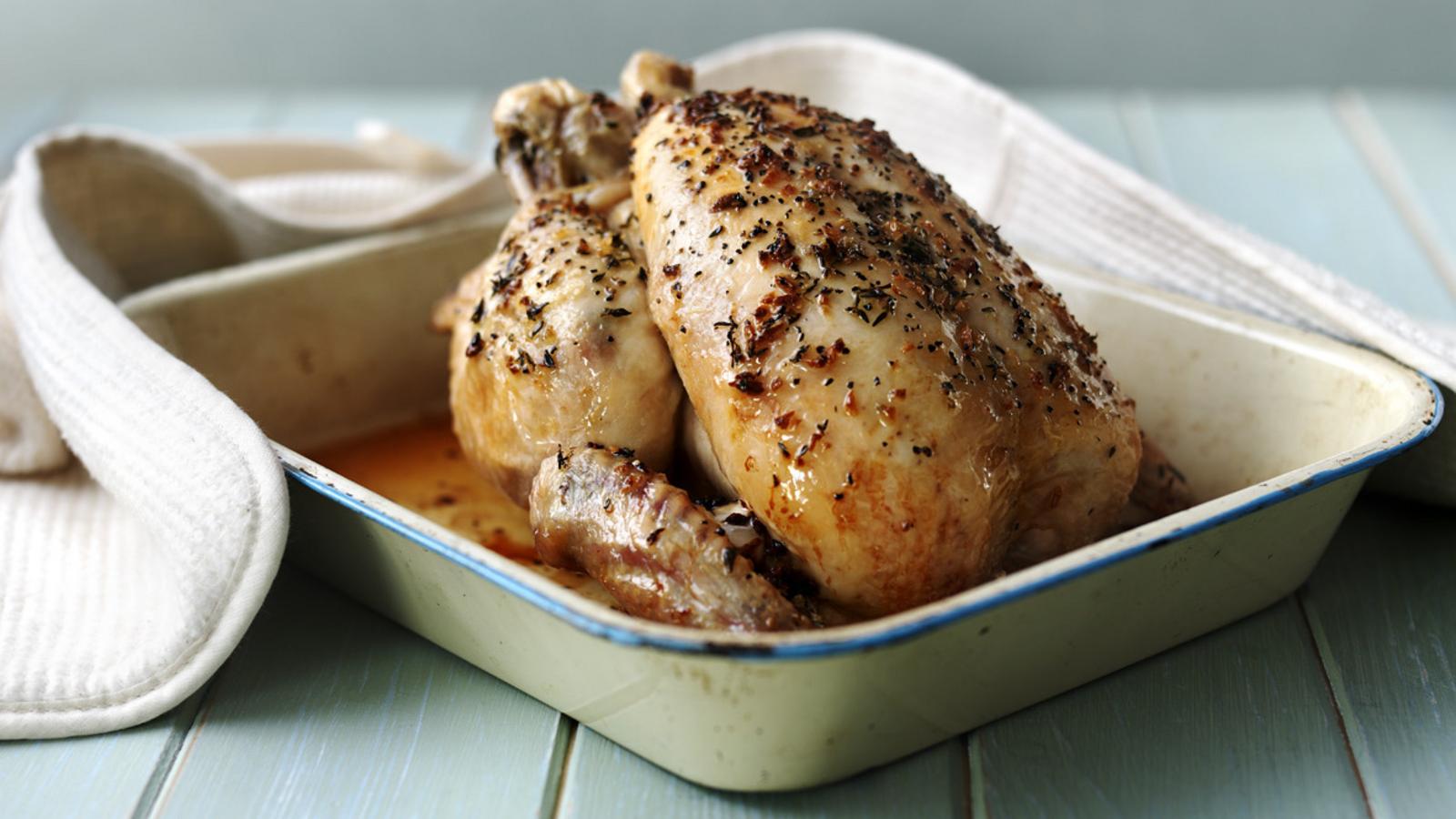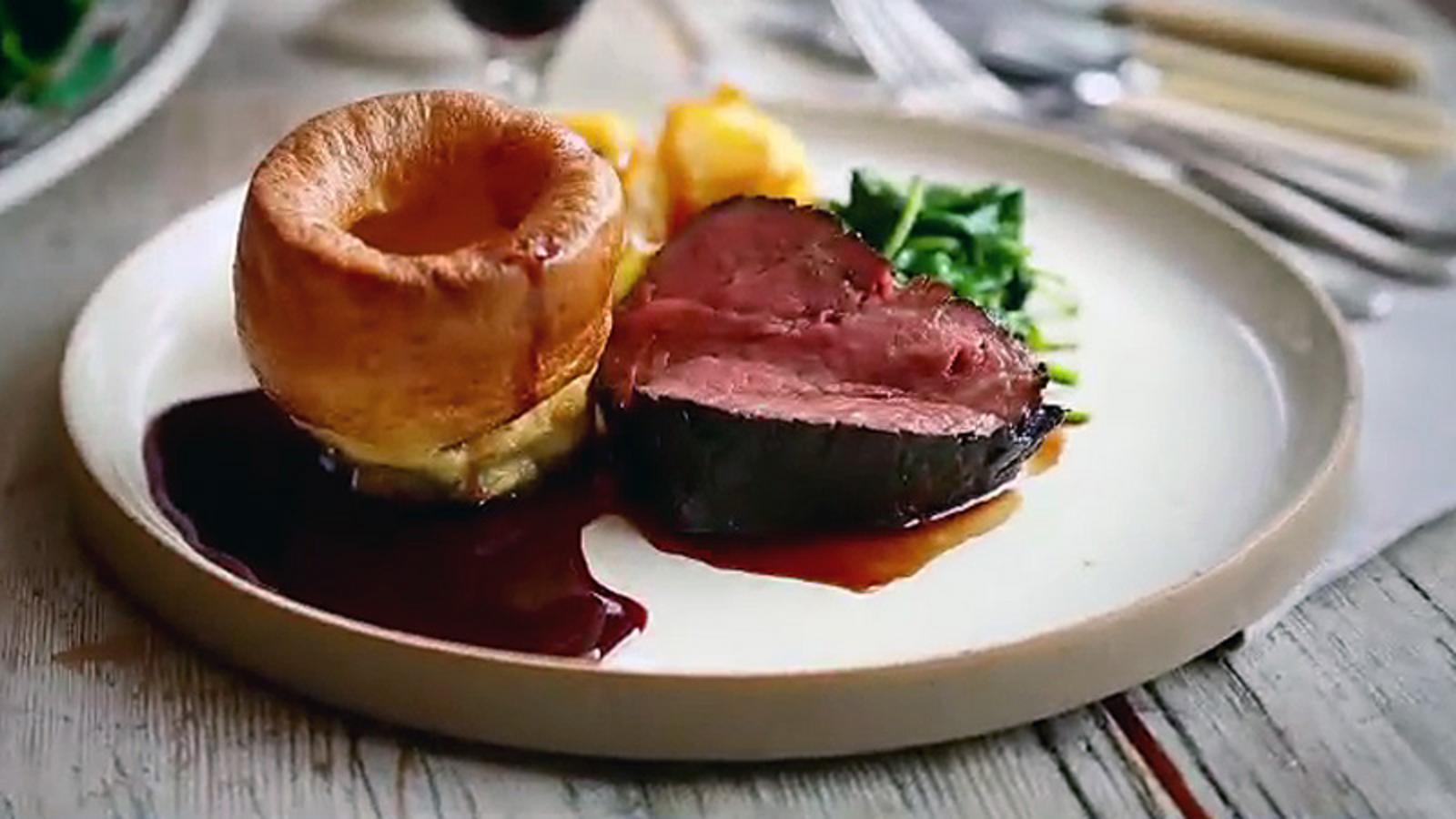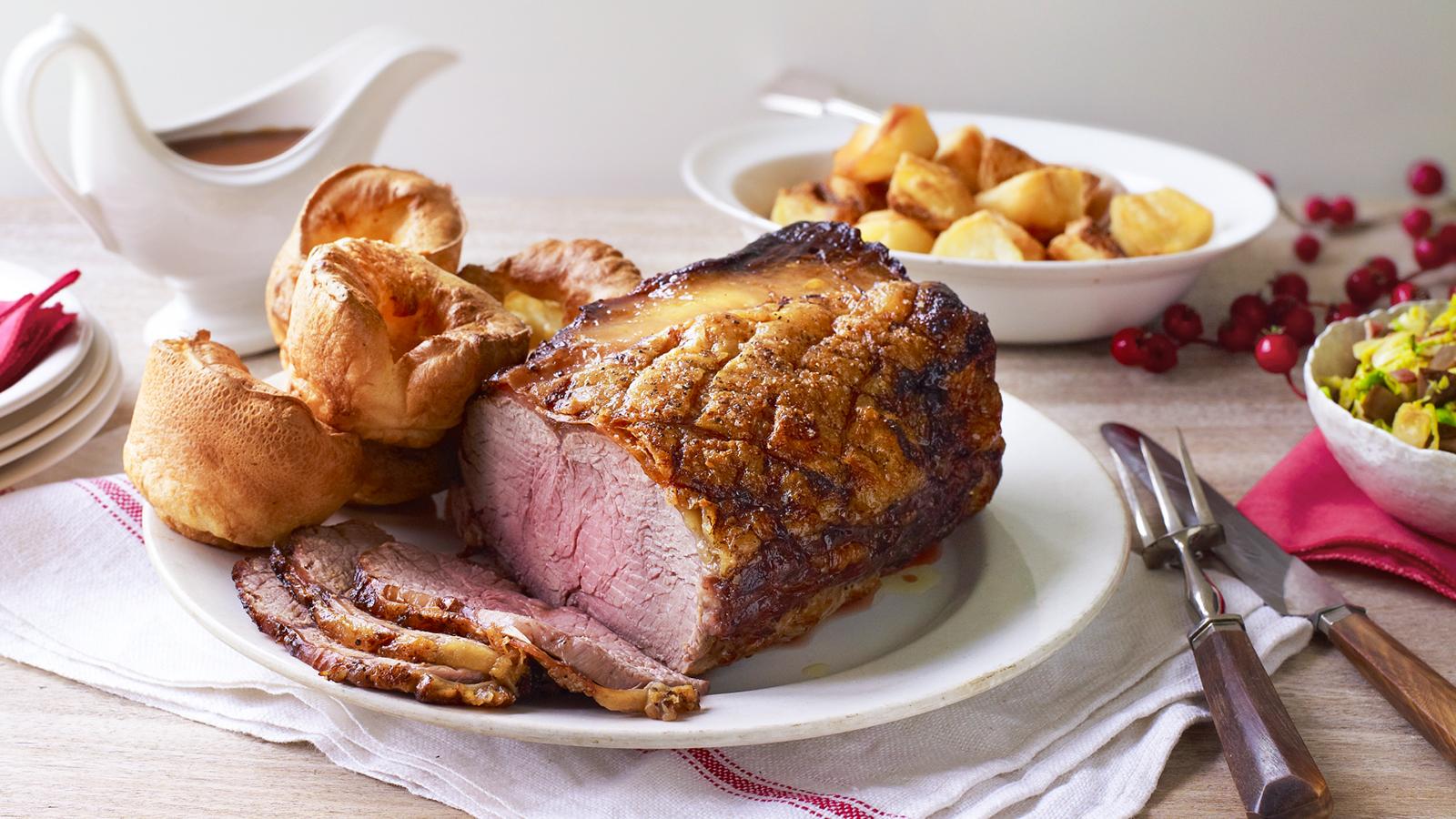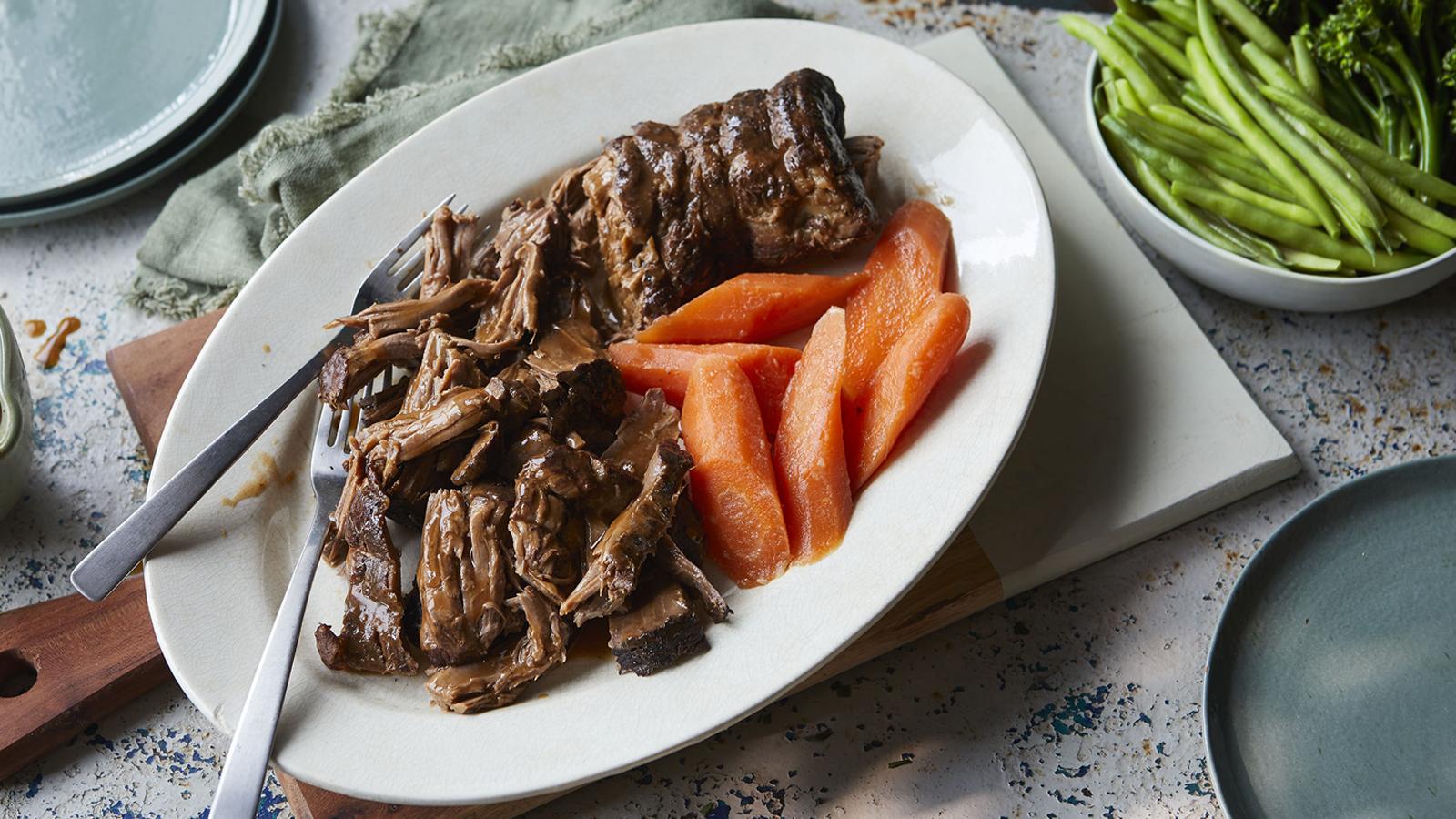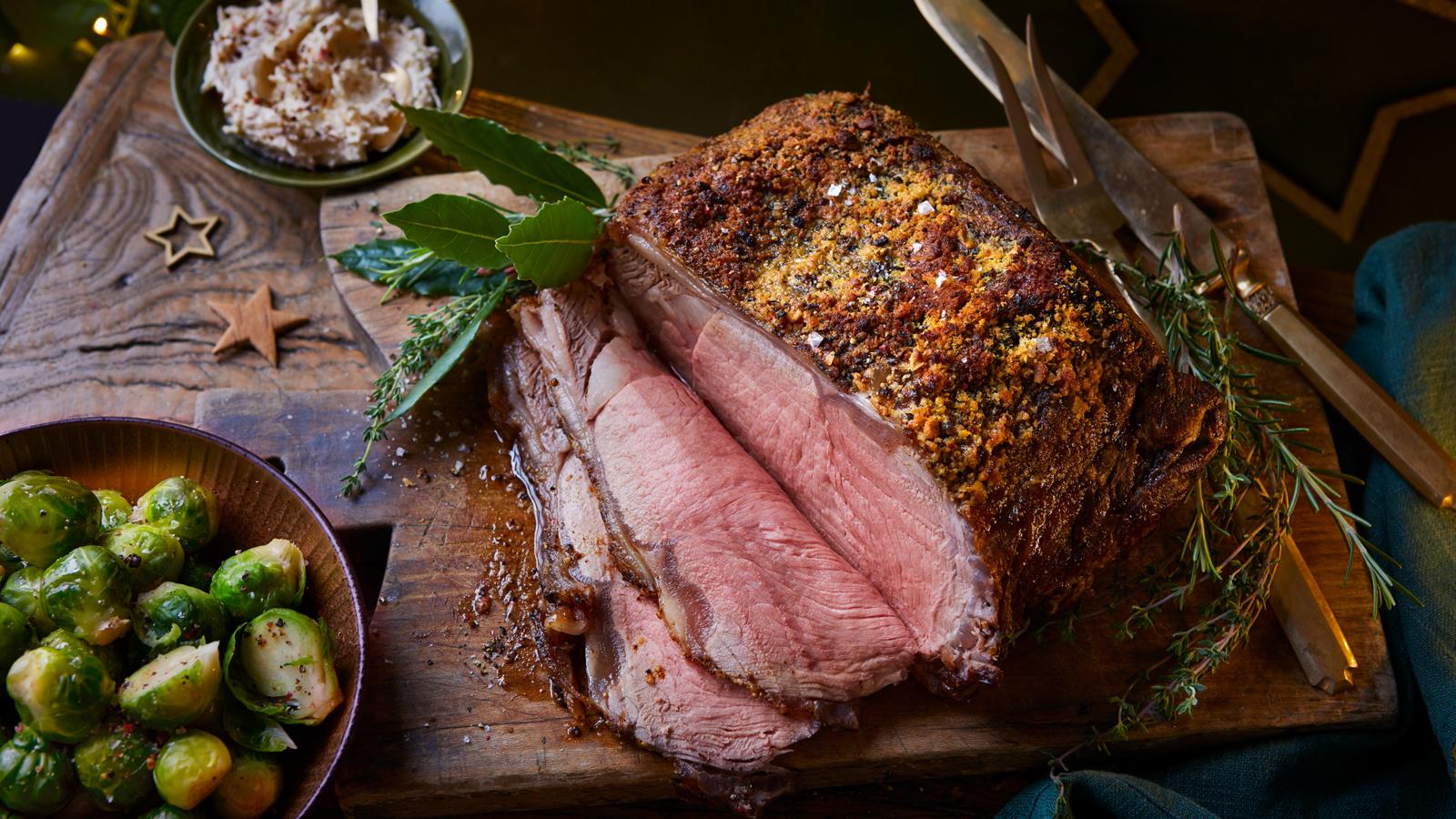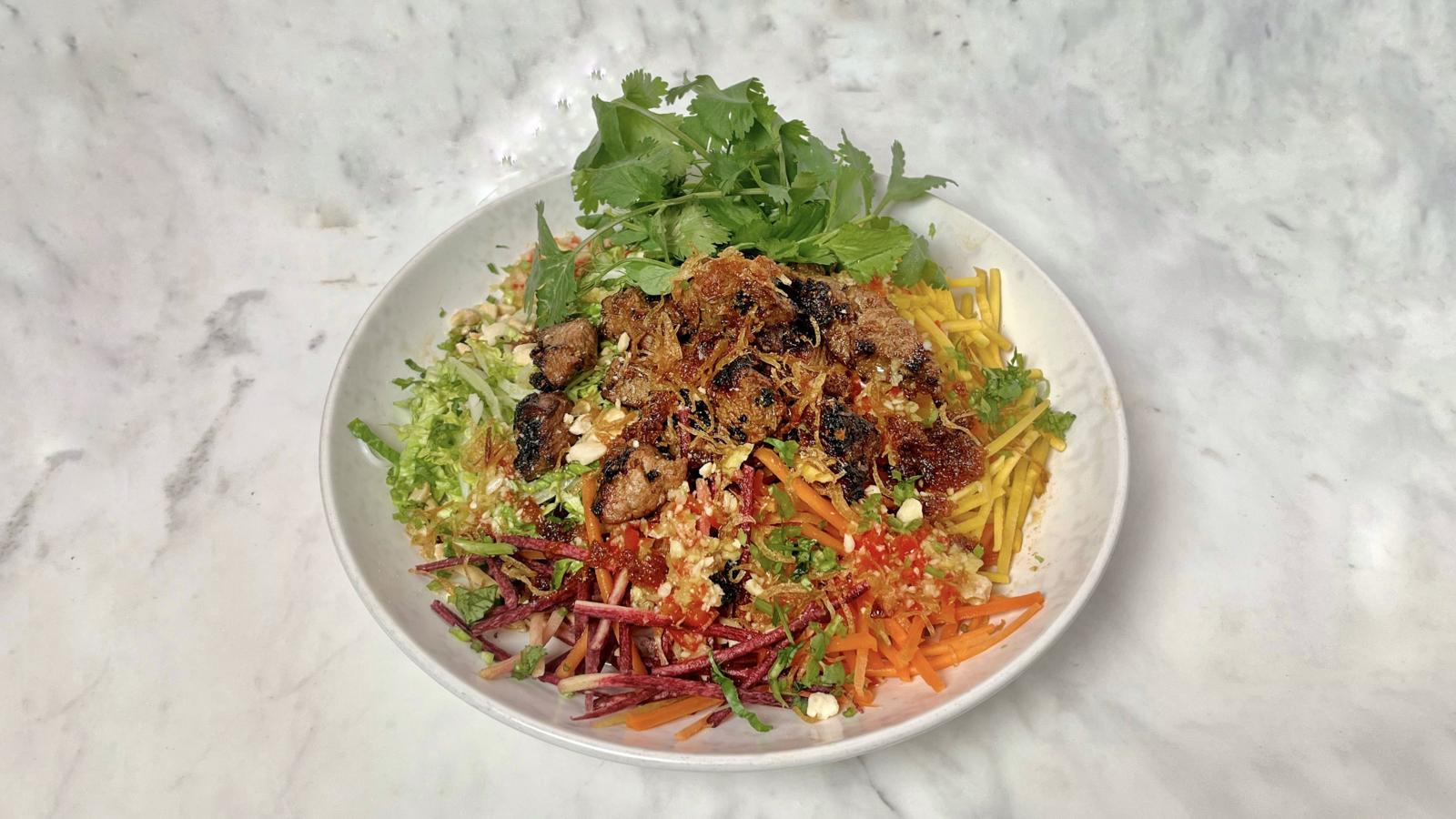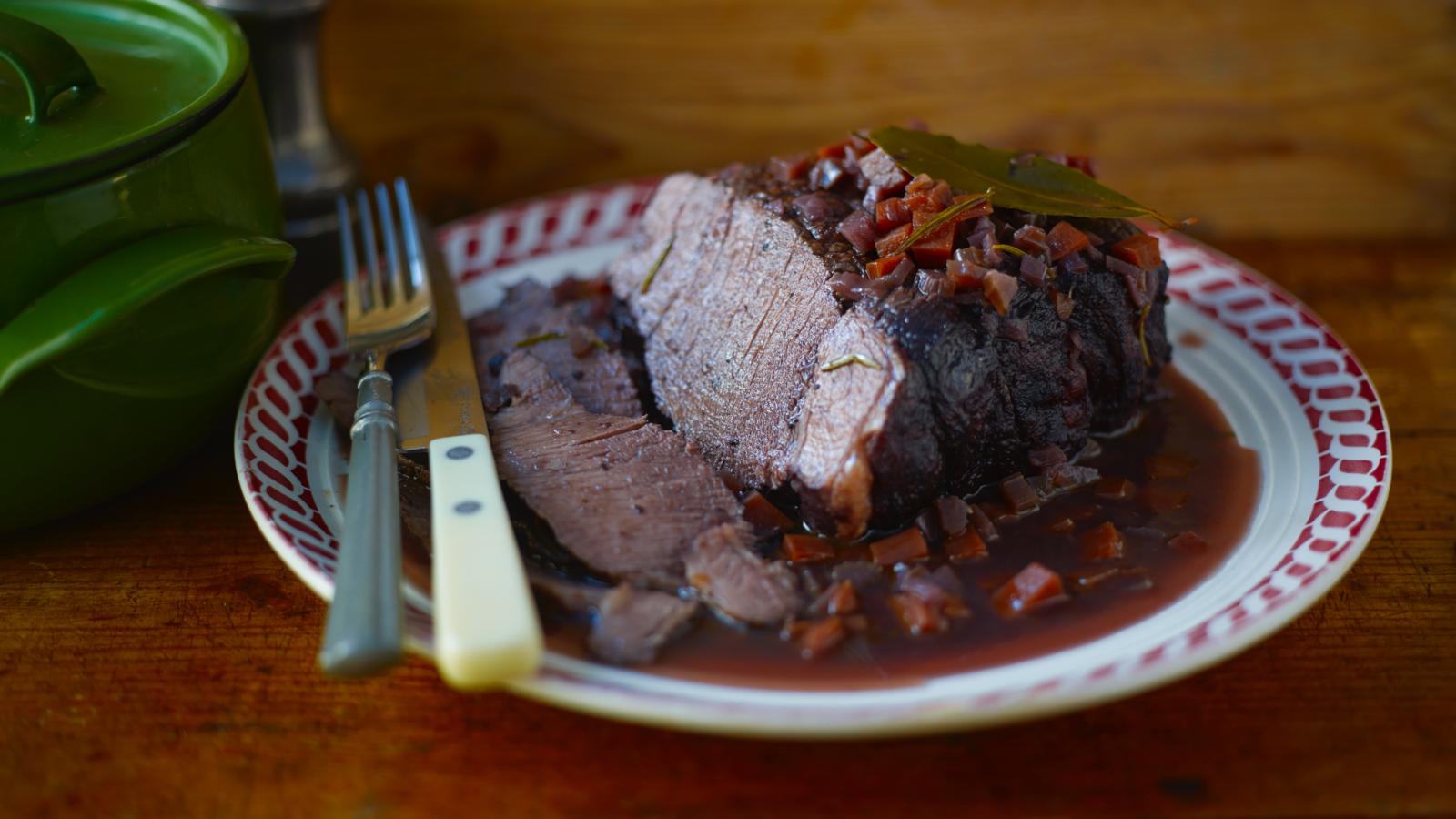Classic roast beef
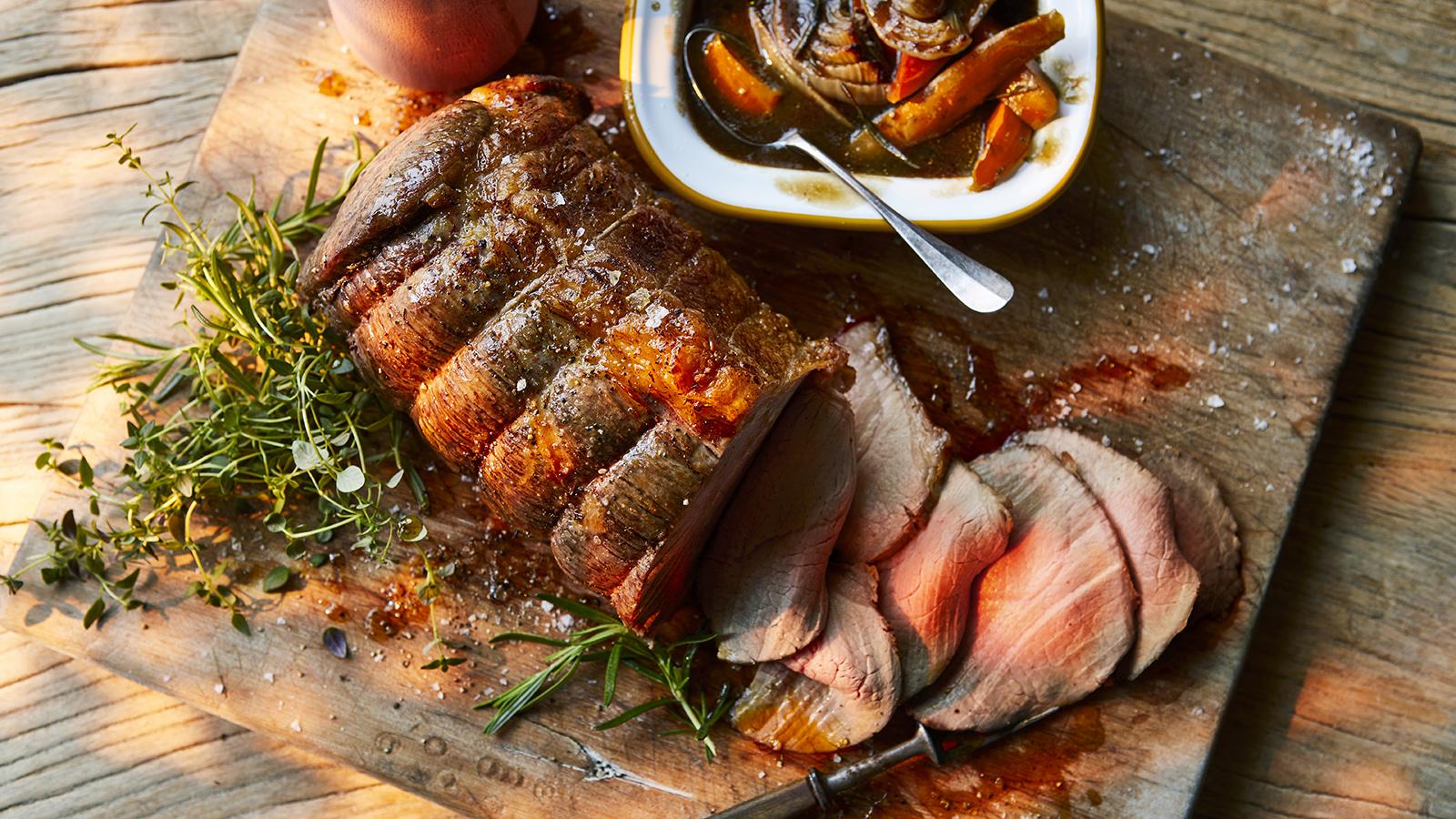
- Prepare
- 1-2 hours
- Cook
- 1 to 2 hours
- Serve
- Makes 1 topside of beef
With a few top tips, my simple recipe and techniques will help you bring out the best in your beef. Serve it with all the classics—Yorkshire puddings, crispy roast potatoes, a generous helping of vegetables, and, of course, a rich jug of gravy.
Method
Remove the beef from the fridge and its packaging one hour before cooking, this will help it to cook evenly. Make a note of its weight and calculate the roasting time (for rare, roast for 4 minutes 30 seconds per 100g/3½oz; for medium rare, roast for 5 minutes per 100g/3½oz; for medium, roast for 6 minutes per 100g/3½oz; for well done, roast for 7 minutes per 100g/3½oz).
Once the hour is up, preheat your oven to 180C/160C Fan/Gas 4.
In a roasting tin that’s just bigger than your joint of beef, place the carrots, onion, thyme and rosemary.
Pat the beef joint dry with kitchen paper then rub all over with the oil and a generous amount of salt.
Place a large frying pan on a medium high heat and sear the beef all over, this should take about 10 minutes. Once browned place the beef, fat side up (if there is any), in your roasting tin and pour over any fat or juices from the pan. Place in the oven and roast. Baste half way through cooking.
Check the temperature of the meat 10 minutes before the end of cooking time as ovens do vary (for rare, the temperature should be 50C, take it out when it reaches 43C; for medium rare, the temperature should be 57C, take it out when it reaches 50C; for medium, it should be 63C, take it out when it reaches 56C; for well done, it should be 70C, take it out when it reaches 63C).
Once cooked transfer the beef to a plate, loosely cover with foil and leave to rest for 20 minutes. You can use the herbs and vegetables at the bottom of the tin to make your gravy, as well as any juices released by the meat.
Carve the beef into thin slices and serve with your choice of sides and lashings of gravy.
Recipe tips
Choosing your cut
For this recipe I have chosen topside, one of the most popular and affordable cuts in the UK although top rump or sirloin will also work. If your meat comes with a layer of fat and bound by string, leave it on for cooking as it will help keep its shape and juiciness as well as improve its flavour.
How much beef per person
Allow 200–250g/7–9oz per person for boneless joints, this should be plenty and even allow for leftovers.
Make a trivet
To help keep the meat juicy and cook evenly all round make a little bed (trivet) of vegetables for your joint to sit on while it cooks.
How do I know when it’s done?
Testing the temperature with a cooking thermometer is by far the best way to see when the meat is done, although it’s important to remember that meat will rise a few degrees and carry on cooking once out of the oven.
To test the temperature, insert the probe of your thermometer as close to the centre of the joint as you can get and wait for 15 seconds before checking the results.
If you don’t have a thermometer, close to the recommended cooking time you can insert a skewer to help guide you. If the juices run red it is rare, pink its medium and clear its well done.
As all ovens vary it is best to check the temperature 10 minutes before the calculated cooking time is up.
How should I cook my meat?
With the leaner cuts like topside and top rump I would recommend serving them rare to medium rare so they don’t dry out. I think sirloin is also at its best when eaten rare or medium rare but due to being a little fattier it can be cooked medium or even well done.
Don’t forget to rest
Once cooked, REST the meat before serving. This stage is as important as turning the oven on as it allows the juices to redistribute to give more tender succulent results.
